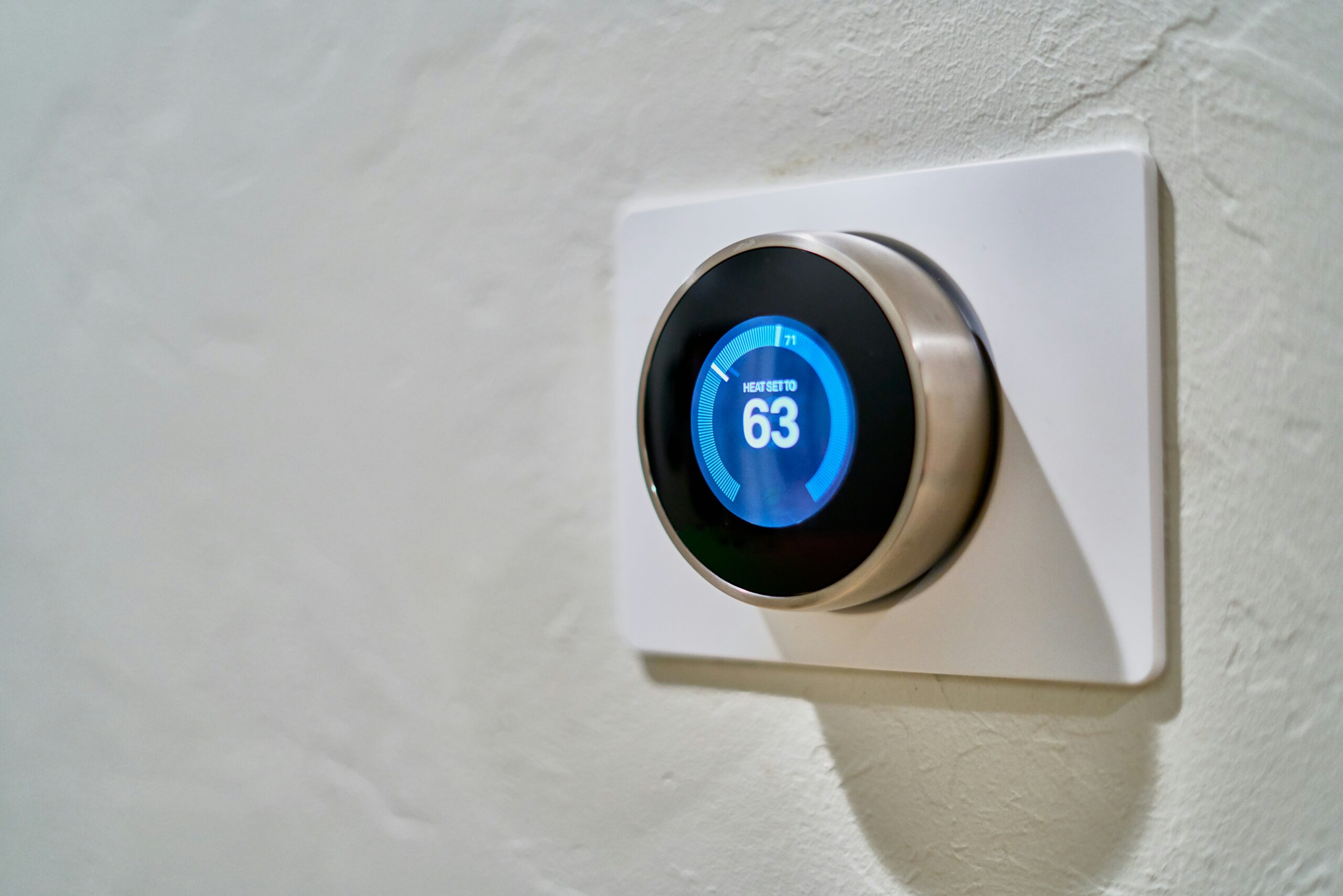Diving deeper into the key components of IoT (Internet of Things)
As we dive deeper into the Internet of Things (IoT), we realize that it is a groundbreaking technology that connects physical items to the digital world, allowing them to gather, share, and act on data in real time. At the heart of the IoT ecosystem are many important components that work together to provide connection and functionality.
Understanding these components is critical to comprehending the principles of IoT and realizing its full potential across industries and applications. Let’s look at the main components that enable the IoT ecosystem, driving innovation and impact.
Sensors and Actuators
What are Sensors?
- Sensors are devices that detect and measure physical phenomena such as temperature, humidity, pressure, motion, light, and more. They convert these analog signals into digital data that IoT systems can process.
What role do sensors play in the Internet of Things ecosystem, and what types of parameters can they measure in the physical environment?
- Sensors are the foundation of the IoT, acting as the system’s eyes and ears, gathering data from its physical surroundings. These gadgets can measure temperature, humidity, pressure, motion, and light. IoT devices process and evaluate electrical signals translated from physical events by sensors.

What are Actuators?
- Actuators are devices that act upon the physical environment based on commands received from IoT systems. They can perform actions such as turning on and off switches, opening and closing valves, controlling motors, and adjusting settings in response to sensor data.
What are the functions of actuators in IoT systems, and how do they enable interaction with the physical world?
- Actuators translate computer orders into physical actions. These devices allow IoT systems to communicate with the real environment through operating mechanisms including motors, valves, switches, and relays. Actuators play an important role in creating automatic reactions based on sensor data, allowing IoT systems to modify settings, trigger alerts, or execute specific functions.
Connectivity Technologies
Connectivity technologies facilitate communication between IoT devices and systems, allowing for data exchange via networks. Common communication choices include Wi-Fi, Bluetooth, cellular networks, Zigbee, Z-Wave, LoRaWAN, and NB-IoT.
- Wi-Fi: High-speed wireless internet access across short distances, ideal for indoor use.
- Bluetooth: Allows for short-range wireless communication between devices; it is widely utilized in consumer gadgets and wearables.
- Cellular Networks: They use cellular infrastructure to offer wide-area coverage and long-distance communication, making them ideal for distant and mobile Internet of Things applications.
- Zigbee and Z-Wave are low-power wireless protocols developed for home automation and Internet of Things applications, allowing for mesh networking and device compatibility.
- LoRaWAN and NB-IoT are low-power, wide-area networks (LPWAN) technologies designed for long-range communication at low data rates, making them ideal for IoT installations in rural or outdoor areas.
- Connectivity technology selection depends on range, data rate, power consumption, and scalability, tailored to each IoT application’s needs.

Edge Devices and Gateways
What are Edge devices?
- These are IoT devices located close to the point of data generation, such as sensors and actuators. They preprocess and filter data before transmitting it to the cloud or a central server, reducing latency and bandwidth usage.
- These devices collect raw data from the physical environment and perform initial processing and filtering before transmitting the data to higher-level systems.
- Edge devices are often resource-constrained, with limited processing power, memory, and battery life, requiring efficient algorithms and optimization techniques.
What are Edge Gateways?
- Edge Gateways serve as bridges between edge devices and the cloud, collecting data from various devices and protocols, translating protocols, and providing security and connectivity features.
- They use protocol translation, data preprocessing, and filtering to reduce latency and bandwidth usage before sending data to the cloud.
- Edge gateways also offer security features like encryption, authentication, and access control to protect data both in transit and at rest.
Cloud Computing and Data Analysis
- Cloud platforms offer scalable computing and storage resources for handling and analyzing large amounts of IoT data.
- These platforms provide features like data ingestion, real-time analytics, machine learning, and device management.
- Data analytics techniques are used in IoT data to extract insights, patterns, and actionable intelligence.
- This includes descriptive, diagnostic, predictive, and prescriptive analytics for improving processes, detecting anomalies, and making informed decisions.

Security Measures
- Security is an important consideration in IoT deployments to prevent unauthorized access, data breaches, and cyberattacks.
- SSL/TLS encryption mechanisms protect data in transit between edge devices, gateways, and the cloud.
- Authentication mechanisms check the identities of devices and users to prevent unauthorized access to IoT systems and data.
- Secure protocols like MQTT with TLS and CoAP with DTLS protect data integrity and confidentiality.
- Regular software updates and patch management help to reduce vulnerabilities and protect against emerging threats.

Integration of Essential IoT Components
- Data Collection
- Transmission of Data
- Data Analysis
- Security Measures
| Category | Components | Functionality |
|---|---|---|
| Data Collection | Edge Devices | Collect data from the physical environment using sensors and actuators. |
| Sensors and Actuators | Capture various parameters such as temperature, humidity, motion, etc. | |
| Data Transmission | Edge Gateways | Aggregate and preprocess data from edge devices before transmitting it to the cloud. |
| Connectivity Technologies | Enable communication between edge devices, gateways, and the cloud using protocols like Wi-Fi, Bluetooth, etc. | |
| Data Analysis | Cloud Computing | Provide scalable computing and storage resources for processing and analyzing IoT data. |
| Data Analytics Tools | Apply analytics techniques such as descriptive, diagnostic, predictive, and prescriptive analytics to extract insights. | |
| Security Measures | Encryption Mechanisms | Ensure data confidentiality during transmission and storage. |
| Authentication Mechanisms | Verify the identity of devices and users accessing the system. | |
| Secure Protocols | Protect against unauthorized access, data breaches, and cyberattacks. |
Enhancing IoT Data Processing Efficiency: Edge and Fog Computing
Introduction
- In the rapidly changing landscape of the Internet of Things (IoT), efficiently processing massive amounts of data has become a critical concern for organizations across industries.
- Traditional centralized data processing approaches, while effective in many cases, are not always appropriate for IoT deployments, particularly when it comes to reducing latency and conserving bandwidth. This is where edge and fog computing come into play.
- In this blog, we will look at how edge and fog computing technologies are transforming IoT data processing, increasing efficiency, and enabling new capabilities. We’ll look at the principles of edge and fog computing, their roles in optimizing data processing at the network edge, and the benefits they bring to IoT deployments.
- Understanding the nuances of edge and fog computing allows organizations to maximize the potential of their IoT initiatives, achieve faster response times, and make better decisions based on real-time insights. Join us on this journey to discover the transformative power of edge and fog computing in improving IoT data processing efficiency.
- Edge computing and fog computing are critical for optimizing data processing in IoT environments by bringing computation closer to the data source. This proximity lowers latency and saves bandwidth, improving overall system efficiency.
Edge Computing
What is edge computing?
- Edge computing, operating near the source of data generation, typically at or near the edge of the devices themselves, facilitates real-time data analysis and decision-making. Consequently, there’s no need to transmit data to centralized servers or cloud platforms.
What are the features of edge computing?
- Reduced Latency: By processing data locally, edge computing reduces the time it takes for data to travel between edge devices and distant servers, lowering latency.
- Bandwidth Conservation: Edge computing reduces the amount of data that must be transmitted across the network to centralized servers or the cloud. This saves bandwidth and reduces network congestion, particularly in bandwidth-constrained environments.
- Enhanced Privacy and Security: Edge computing can improve data privacy and security by limiting sensitive data to the local network and reducing exposure to potential security threats during data transmission.
Fog Computing
What is fog computing?
- Building upon the principles of edge computing, fog computing establishes a distributed computing infrastructure. This infrastructure links edge devices to centralized cloud platforms. In turn, this architecture allows for computation and data storage at intermediate nodes situated between edge devices and cloud servers.
What are the features of fog computing?
- Optimized Data Processing: Fog computing augments edge computing by offloading specific processing tasks from edge devices to nearby fog nodes. This distributed processing approach aids in balancing computational loads and optimizing resource utilization.
- Dynamic Resource Allocation: Fog computing enables dynamic resource allocation in response to workload demands and network conditions. It enables flexible scaling of computational resources to meet changing requirements without relying entirely on centralized cloud servers.
- Improved Scalability: By distributing computational tasks across a network of fog nodes, fog computing improves scalability and resilience, allowing IoT systems to cope with increasing data volumes and processing demands.
Summary
- This blog explores the world of IoT (Internet of Things) and its fundamental components. It explains how sensors and actuators collect and respond to real-time data, while connectivity technologies such as Wi-Fi and Bluetooth allow devices to communicate with one another. Before data can be analyzed in the cloud, it is processed and transmitted by edge devices and gateways. Security measures such as encryption are critical for safeguarding sensitive data.
- The second part of the blog delves into the challenges of processing massive amounts of IoT data. Traditional methods may not be effective at reducing latency (delay) and conserving bandwidth. Here’s where edge and fog computing come in. These technologies increase efficiency by processing data closer to where it originates.
- Edge computing occurs at the device level, allowing for real-time decisions without relying on distant servers. It lowers latency, saves bandwidth, and improves security. Fog computing expands on this concept by distributing processing tasks across a network, optimizing resource allocation, and improving scalability for dealing with large amounts of data.
Discover more from lounge coder
Subscribe to get the latest posts sent to your email.

